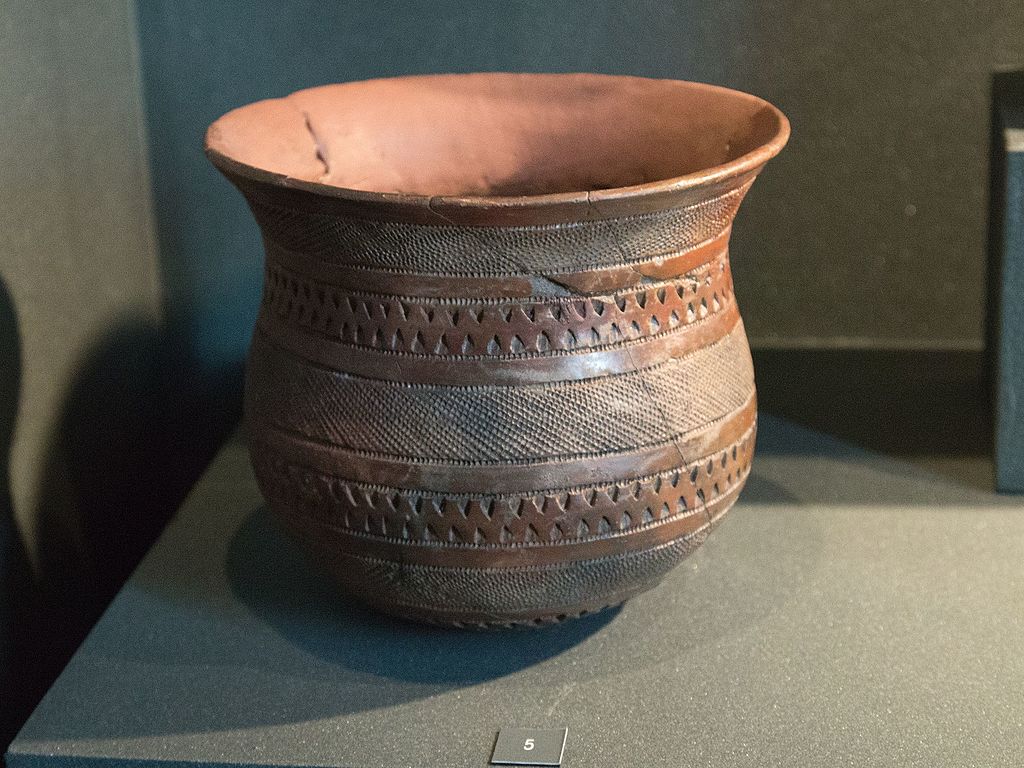Prehistory is generally defined as the period of human history before writing had been invented, of course that means very different things in different parts of the world. The Stone Age begins with the invention of stone tools around 3.3 million years ago, before Homo Sapiens had even evolved! Humans (as in Homo Sapiens), only emerged biologically around 300,000 years ago, and didn’t behave like modern humans until around 160,000 years ago.
In the Bronze Age cultures in the Middle East and Mediterranean invented writing; Britain remained illiterate until the Roman invasion at the end of the Iron Age in 43AD. Even today, some remote tribes in the world still have not “discovered” metal working and are therefore still arguably Stone Age cultures.
Stone Age Britain
The oldest stone tools discovered in Britain were found on the north-west coast of Norfolk and date from around 900,000 years ago. At this point right up until around 8,500 years ago, Britain was still connected by a land bridge to the rest of Europe. This land bridge is known as Doggerland and was where the North Sea is today.
Human habitation in Britain was interrupted by the last ice age, and it wasn’t until the glaciers retreated that people really settled on the islands. They would have been Hunter Gatherers, foraging and following the migration of animal herds for food. By around 6,500BC, rising seas and a land slip in Norway caused a Tsunami which cut the islands off from mainland Europe, and isolated the humans living in Britain.
At this point there were no permanent settlements – no towns or villages – and people would have lived in temporary huts made of wood and animal hides, similar to the Yurts of Mongolia or Teepees of North American tribes. Tools for survival were made of wood, bone, antler and of course flint, which could be “knapped” or chipped in specific ways to make a very sharp edge for knives, spears, arrows and scrapers.

Bronze Age Britain

While gold may well have been the first metal to be discovered, forming nuggets that are obviously different from the surrounding rock, it was too soft to make anything other than decorative items. The first metal that could actually be used for tools was copper. However copper was also soft. It was not until the discovery that adding tin to copper made a metal far stronger and harder than anything previously known, that the alloy known as Bronze shifted humanity into a new age.
Famous Bronze Age cultures include Ancient Egypt and Mesopotamia, the Indus Valley civilisation and the Minoans of Crete. With the Bronze Age came better farming techniques and therefore more surpluses to trade with others. This in turn opened up trade routes, created larger towns and, in turn, cities with more powerful rulers and we start to see the first true empires. In some parts of the world, now that there was a need to govern larger areas of land, someone had to invent administration and record keeping, and therefore write things down. However not all Bronze Age cultures used writing, and it would not become commonplace in Britain until the Roman occupation at the end of the Iron Age.
The Bronze Age was also responsible for some of the most famous structures in the world. From the great temples and tombs of Egypt to Stonehenge, Bronze Age people suddenly had the time, organisation and resources necessary to create ceremonial monuments that could never have been built when humans had to spend all their time hunting and foraging to survive.
Iron Age Britain
Britain was rather late to the Iron Age party, not really getting going until around 500BC, when the Near East had had iron-working since around 3000BC (albeit on a small scale). Iron Age Britain is traditionally seen as populated by the Celts – a group of cultures linked by a language family that spread across half of Europe from the end of the Bronze Age into the Iron Age. Today the only remnants of those languages anywhere in the world are in Scotland, Wales, Ireland, Cornwall and Brittany in Northern France, places that are still considered “Celtic” even today.
The “Celts” or more correctly, the tribes of Ancient Britons who populated the islands, are famous for building hill forts – proto castles involving sometimes massive earthworks such as Silbury Hill and Maiden Castle.

As their priests – Druids – were forbidden from writing their beliefs down, we don’t know much about the religion and mythology of the Britons except that they believed in many Gods, and like other pre-Christian cultures were very connected to their natural environment. We do have Roman writings from the occupation and later medieval texts that may record older stories, but these sources are not the most reliable! However we can trace the very earliest beginnings of the myth of King Arthur to these oral stories, which were eventually written down in the 11th-13th Century AD in Wales.
The Iron Age officially came to an end in Britain with the Roman invasion and occupation from 43AD onwards. However the Britons did not make it easy for the Romans; there were many battles and rebellions, the most famous of which was led by the Queen of the Iceni tribe, Boudicca.


Leave a Reply
You must be logged in to post a comment.